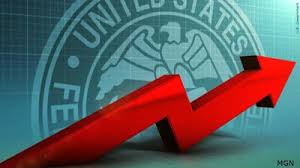MarketWatch
The numbers: Consumer prices rose 0.4% in February and the annual rate of inflation slowed again, potentially giving the Federal Reserve leeway to approve a smaller increase in interest rates next week as it gauges the fallout from the failure of Silicon Valley Bank.
Economists polled by The Wall Street Journal had forecast a 0.4% advance in the consumer price index last month. Prices had risen 0.5% in January, revised government figures showed.
The annual rate of inflation, meanwhile, slowed to 6% from 6.4%. That’s the lowest level since September 2021.
Yet the so-called core rate of inflation, which omits food and energy, rose a sharper 0.5%. Wall Street had forecast of 0.4% gain.
The Fed views the core rate as a more accurate predictor of future inflation trends.
The increase in the core rate over the past 12 months dipped to 5.5% from 5.6%, but that’s not enough progress to give the Fed room to ease up on its fight against inflation.
Big picture: The Fed didn’t cause SVB to fail, but its aggressive interest-rate increases over the past year exposed the risky side of the bank’s business and may have doomed it to failure.
Now the Fed is under pressure to stop raising rates, at least until the fallout from the SVB collapse is more clear. Some worry more banks could succumb if the Fed sticks to its plan.
Yet the still-strong increase in core inflation in February makes it harder for the Fed to pause now. Just last week, Fed Chairman Jerome Powell even hinted that another jumbo rate hike was on the table.
Senior central bank officials could make a game time decision.
Looking ahead: “The Fed and other hawkish central banks now have tough decisions ahead,” senior economist Priscilla Thiagamoorthy at BMO Capital Markets said before the CPI report. “Continue with more rate hikes to extinguish the inflation inferno or pause the process, at least briefly, to ensure financial stability.”














